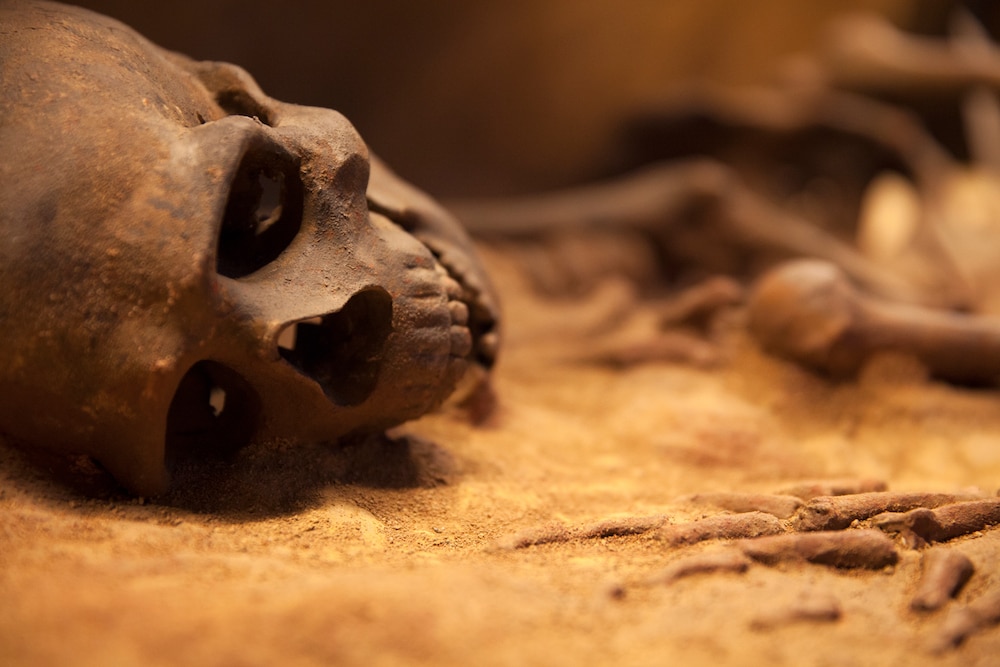Create a free profile to get unlimited access to exclusive videos, sweepstakes, and more!
Turns out Homo sapiens are older than we previously thought... like, way older
The earliest members of our species go back... 230,000 years back

When were humans really born? Though our Homo ancestors go back millions of years, Homo sapiens didn’t appear on the scene until 200,000 years ago. Make that 230,300.
Turns out our species is older than we previously thought. Fossils excavated from the Omo Kibish formation in southwestern Ethiopia are some of the oldest known human human fossils. The Omo I remains, bones thought to be less than 200,000 years old, have now been found to date back to some 230,000 years ago. The skeletal structure also has more in common with us than any other Homo species which were then fumbling to become human.
Volcanologist Céline Vidal of Cambridge University, who led a study recently published in Nature, paleoanthropologist Aurélien Mounier from the Musée de l'Homme in Paris, and their colleagues wanted to date the Omo I samples again because they apparently coincided with a prehistoric volcanic eruption. An age of 200,000 years didn’t align. After studying the samples, they realized they were looking at the earliest evidence of Homo sapiens ever unearthed.
“What makes Omo 1 a Homo sapiens specimen is the presence of a chin and tall cranial vault,” Vidal told SYFY WIRE. “It has long been recognized as the oldest fossil of our species found in eastern Africa so far.”
There had been no effort to date the Omo I bones with radiometric methods before since the volcanic ash they were buried in was too fine. To find out if the people who these bones once belonged to were living during that eruption of the Shala volcano 230,000 years ago, they needed to analyze the chemical makeup of volcanic pumice rock and compare it to the layer of ash that was left from that particular eruption. Vidal, Mounier and their research team needed to crush the pumice to determine what was in it. Eruptions have unique chemical fingerprints.
The pumice had to be crushed in order to free the elements that could tell what happened with the magmatic flow of the Shala eruption. Inside was volcanic glass, which holds minerals together. It is mostly made of oxides — silicium, titanium, aluminium, iron, magnesium, calcium, potassium, and sodium oxide. Analyzing the ash meant sieving and cleaning it before mounting it in resin to observe under an electron microscope, which focuses on a sample and zaps it with a beam of electrons. Because electrons behave kind of like waves, they magnify an object.
“When we compared the chemical composition of the Shala rocks with that of the ash above the Omo 1 fossil at Kibish, we discovered that they were identical,” said Vidal. “The chemical correlation meant that this ash layer had traveled south from Shala to Kibish."
Since the Omo I fossils were buried deeper than that layer of ash, it meant they were at least 230,000 years old, and possibly older. There might be even older bones in the unexplored layers beneath. When these fossils were first discovered in 1967, they were already recognized as Homo sapiens fossils, though their age was underestimated. It is the tall and globular cranial vault along with an actual chin on the lower jaw that gave them away as our ancestors. Morphological features that define Homo sapiens were what the research team looked for.
“Omo I being morphologically recognized as a member of our species tells us that before 230,000 years ago, Homo sapiens was already present in this part of the world,” Mounier said. “In my opinion, Omo I represents the oldest occurrence of our species in the fossil record.”


























